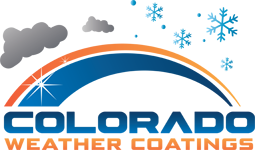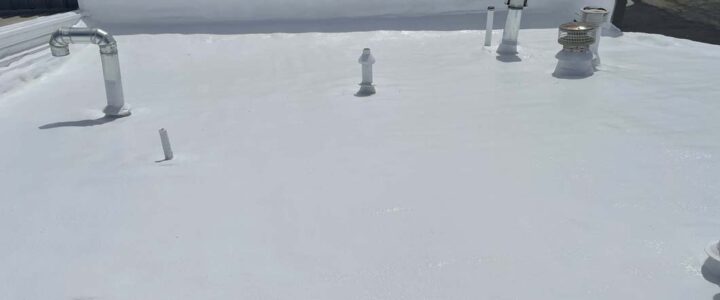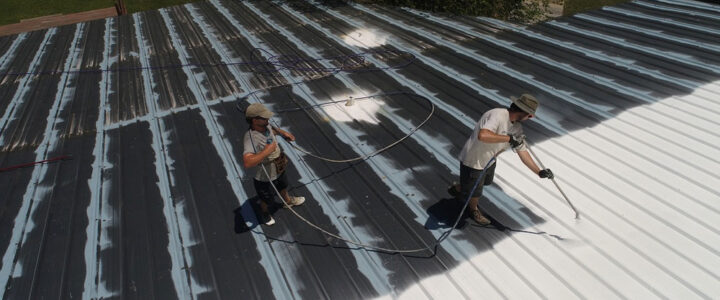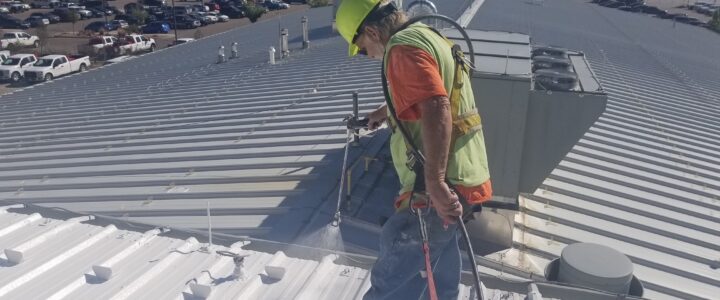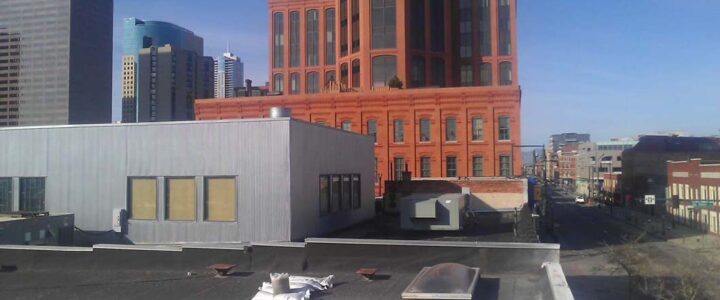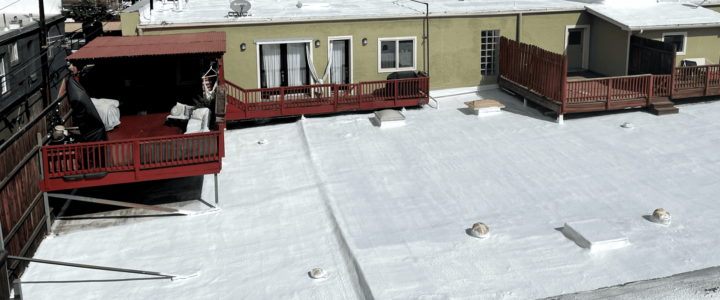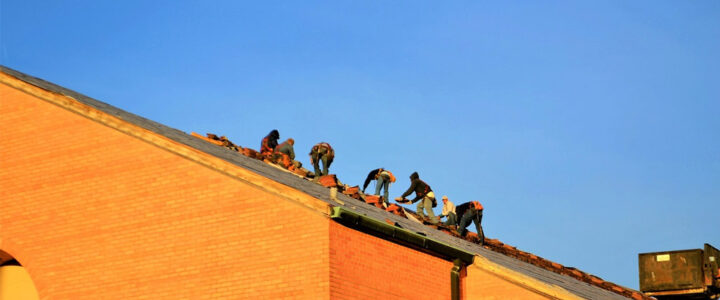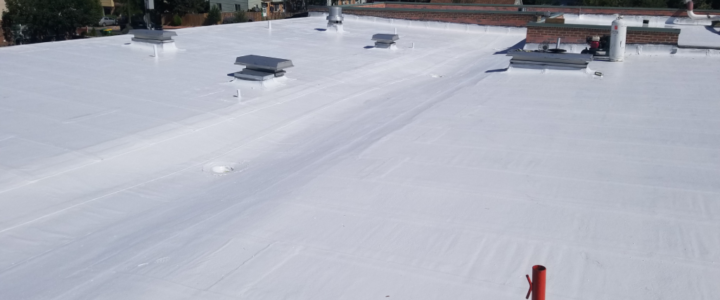Foam roofing, especially those constructed with spray polyurethane foam, has increased in popularity in both residential and commercial buildings because it offers better energy efficiency, high durability, and ease of installation. But one of the most common questions for this kind of roofing that property owners have is: How long is the life span of an SPF roof? This article explains the variables that will affect how long a foam roof can last, what general, overall expected lifespan to consider, and general practices for maintenance to ensure longevity.
What Is a Foam Roof?
Foam roofing is created from two liquid chemicals, isocyanate and polyol, combined together and then expanded to form a solid, seamless layer of foam over the roof. This foam will expand at a ratio of 20:1 and attaches itself in a seamless, continuous fashion to the roof substrate, very resistance to water and air infiltration. The layer of foam is generally covered with some sort of protective coating to shield it from UV rays and other forms of physical damage; this would definitely include silicone or acrylic.
Factors That Affect How Long Foam Roofs Last
Quality of the Installation
Foam roof life depends on the quality of the installation. Indeed, proper installation requires highly trained and qualified contractors who can do justice to intricate mixing and application. Some of the key problems of poor installation are improper adhesion, which may lead to potentially insufficient thickness and uneven application, all of which substantially curtail the life expectancy of the roof. To this end, it becomes very important to pick a reputable contractor with sufficient experience in SPF roofing.
Type and Quality of Materials
The kind of foam and protective coating that is used also has a big effect on the lifespan a roof will enjoy. Higher SPF materials and coatings are more resistant to UV and broad temperature swings. Higher investment in superior materials could correlate with a life expectancy that is longer, having a reduced frequency of maintenance.
Climatic Conditions and Environment
The life expectancy of a foam roof is drastically affected by the climatic and environmental exposures that the roof undergoes. Extreme temperatures, considerable rainfall, high humidity, and irreversible ultraviolet rays work together in wearing out the roof over time. Added protective measures, like thicker coatings or additional maintenance, can help extend life expectancy under harsher weather conditions.
Maintenance Practices
To keep the working performance of the foam roof, regular maintenance is very necessary. Small problems that can easily grow to major ones could be detected with regular visits. Re-coating the roof every 5 to 15 years depends on where it is located and the coating used. Standard maintenance regarded it as, and may grant a further lifetime of many years to the roofing.
Typical Longevity of Foam Roofs
In perfect conditions and if well maintained, a foam roof can last around 20 to 30 years. However, cases of foam roofs are not unheard of to easily surpass that mark, with many going up to 50 years. Here is what to expect during the different phases of the lifecycle of a foam roof, rather:
Initial Installation (0-5 years)
In the early years after installation, most foam roofs perform very well, with relatively low maintenance. The foam is still resilient, and the protective coating is sound, providing excellent resistance to leaks and weather damage. Regular inspections during this time may be used to establish a base line so that future maintenance can be compared against.
Mid-Life (5-15 years)
Over time, coating wears out, mainly on areas directly hit by sunlight and areas with high foot traffic. This is the time frame when re-coating of the roofing needs to be done. Besides replacing the protective layer, re-coating gives an opportunity to address minor damages done in order to extend life expectancy of the roofing. As such, the property owners should set a budget for re-coating during this time to ensure optimum performance of the roof.
Maturity (15-30 Years)
With constant upkeep, including periodic recoating and patching, a properly applied foam roof can continue to perform and protect throughout its third decade. At this stage in the life cycle, attention may need to be focused on specific locations showing wear and tear. Regular inspections will become necessary to identify any new cracks, among other issues, in which the foam could have thinning areas present. These minor problems can be prevented from becoming significant problems that can compromise the integrity of a roof through prompt repairs.
Medium-Long Term (30+ years)
If 20 to 30 years may be the normal life expectancy of a foam roof, there are those that last beyond these years. Further coating, combined with new methods of maintenance, can give the roof an extended life. Property owners who invest in good materials and some elbow grease have a clear shot at getting more years of hassle-free service from their foam roof.
Best Practices in Foam Roof Maintenance
Listed here are some of the best practices that a building owner must take into consideration to maximize the life of a foam roof:
Periodic Inspection
It should be inspected at least twice a year for the condition of the roofing. Inspection should also be done after major weather events such as storms or hail. Inspect for cracks, blisters, or thinly coated portions during the inspection. Early detection will prompt repairs and prevent further deterioration.
Prompt Repairs
Address any problem identified as it may worsen if not addressed. Chips or punctures that may be small can easily be patched, but the source is bound to grow and cause broad damage if left unattended. Seek professional services from a roofing contractor to ensure any repairs are done effectively and perfectly.
Re-Coating
It allows preserving the protective barrier of a roof. Application differs among coating types and by rule of climatic conditions: high quality silicone or acrylic coats provide superior UV resistance and durability, hence requiring re-coating less often. Re-coating protects the layer from deterioration, enhances the reflective properties, and prolongs the life time span.
Preventative Measures
Implement measures to prevent damage to this roof. For example, avoid walking on the roof wherever possible to protect the foam and coating from physical damage. Install walkways or protected mats in places where regular access is necessary to the roof. Trim tree overhangs to prevent accumulation of debris and potential damage from falling branches.
Maintenance by a Professional
Engage professional roofing contractors for routine maintenance and repairs. In that way, experienced contractors can identify what the potential problems are and provide effective solutions to deal with them. It ensures professional maintenance so that the roof remains in optimum condition and maximizes its lifespan.
Foam roofs provide energy efficiency and durability and can establish a long-term roofing solution for residential or commercial real estate. While the typical lifespan of a foam roof ranges from 20 to 30 years, proper installation, high-quality materials, regular maintenance, and timely re-coating can significantly extend this lifespan. By following best practices for maintenance and investing in professional care, property owners can enjoy the benefits of their foam roof for many decades, achieving an excellent return on their investment.
